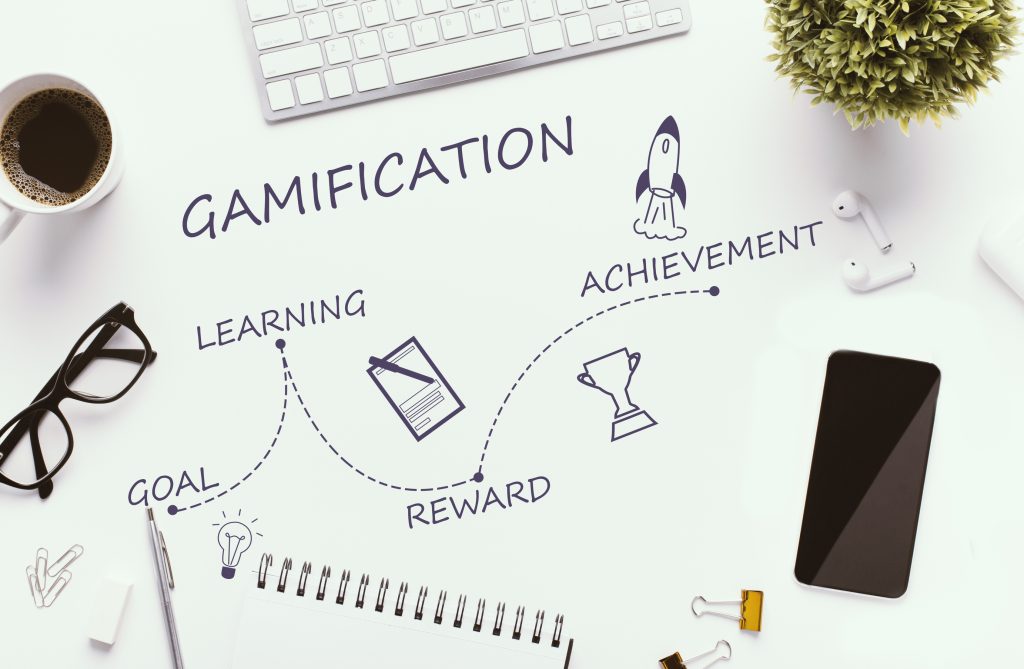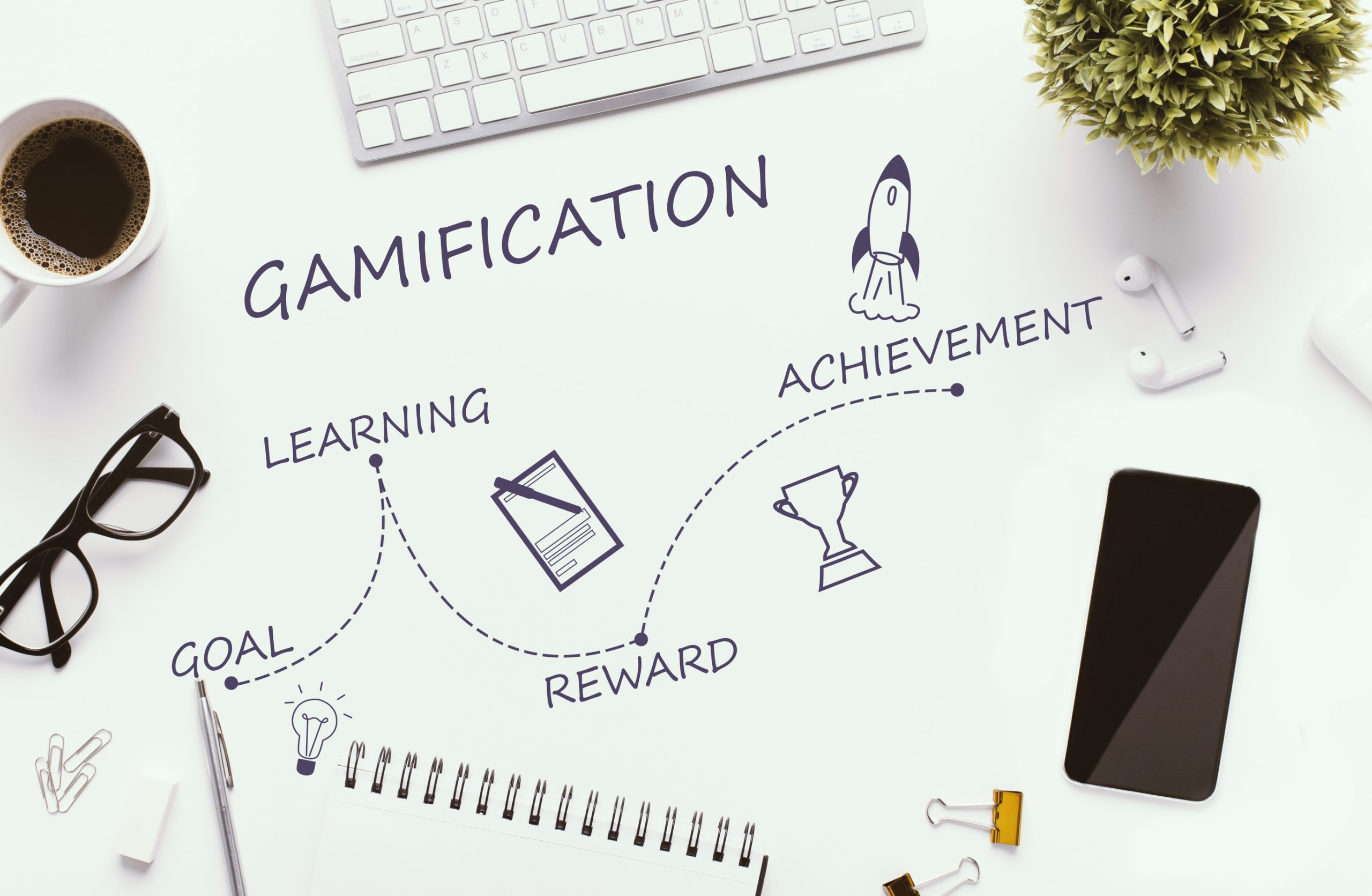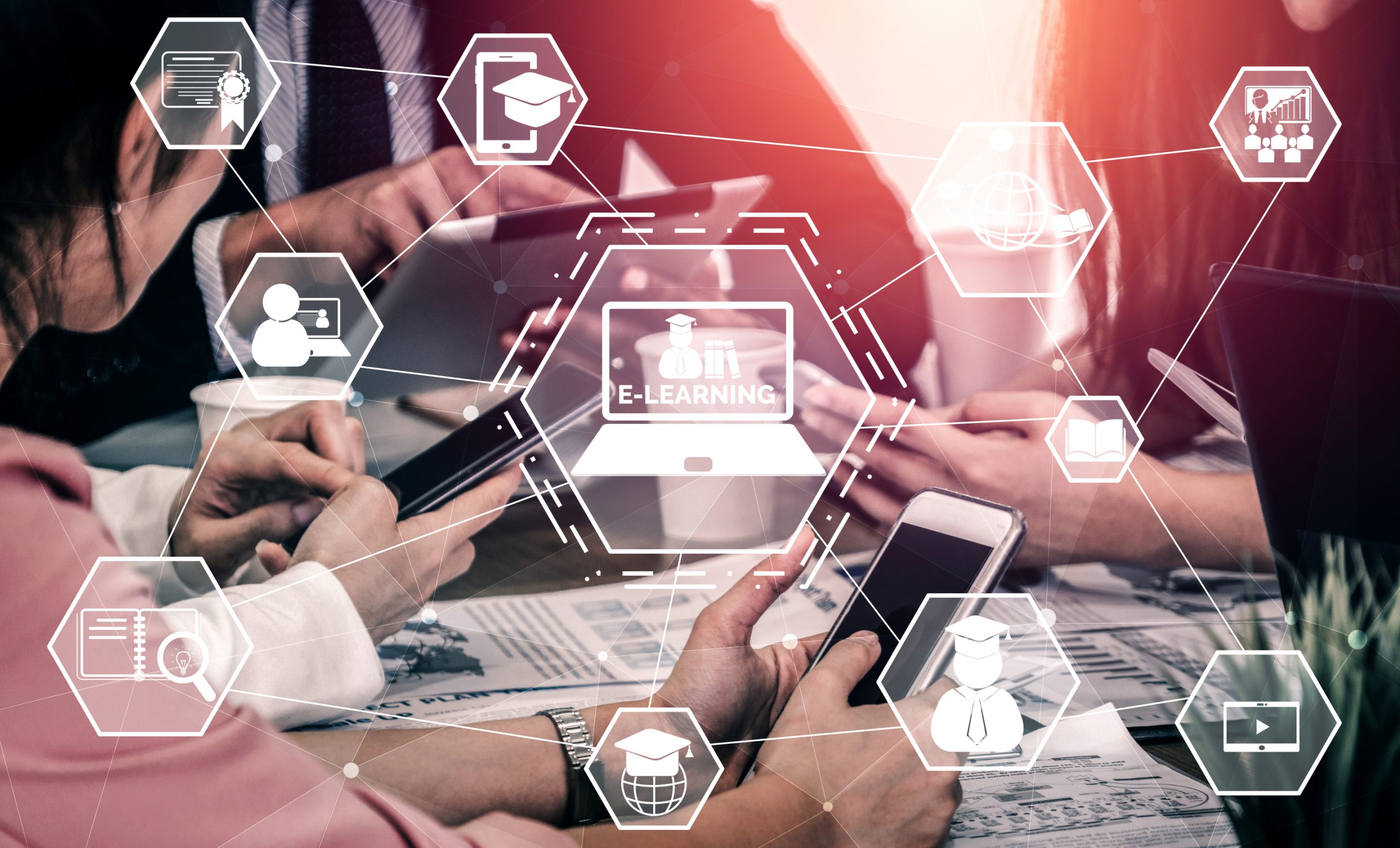Unlocking Engaging Learning Experiences: Gamification for Effective Knowledge Acquisition
Introduction
Welcome to a new era of engaging learning experiences that captivate learners and foster effective knowledge acquisition! In this blog article, we will delve deep into the transformative potential of gamification in Learning & Development (L&D). As a Learning & Development professional you have the opportunity to harness the benefits of gamified learning experiences and ride the waves of gamification trends to revolutionize your training programs.
To learn more about implementing a diversity & inclusion strategy in your company, check out our free eBook on DEI strategy here.
Gamified Learning Experiences
A Path to Enhanced Learning Traditional teaching methods and mundane PowerPoint training are becoming a thing of the past. Gamification, a powerful concept that has gained traction in both educational and organizational contexts, has emerged as a frontrunner in innovative learning approaches. Vasilis Gkogkidis’ “An Hour of Play: A Quick Guide to Designing Games and Gamification for Learning” offers actionable ideas and concepts to help you create captivating learning games for your audiences.
Incorporating elements of gameplay, competition, and rewards, gamified learning experiences have the potential to engage learners on a deeper level, fueling their intrinsic motivation to explore, learn, and succeed. By transforming learning into an adventure, learners are not only acquiring knowledge but also developing critical thinking, problem-solving, and decision-making skills.
To learn more about gamified learning download our free eBook here.
Gamification encourages active participation, breaking the passive consumption of content that is often associated with traditional learning methods. Learners become active agents in the learning process, shaping their learning journey based on their choices and actions. This active engagement not only deepens knowledge retention but also fosters a sense of ownership and accomplishment.
Embracing the Benefits of Gamification in Learning
Why settle for mediocrity when you can achieve greatness? Gamification in L&D unlocks a plethora of benefits that elevate the learning experience to new heights. Let’s explore some of the significant advantages of incorporating gamified elements into your training programs:
Increased Engagement
Gamified learning experiences are designed to capture learners’ attention and maintain their interest throughout the learning journey. The element of challenge and the prospect of earning rewards create a sense of excitement and urgency, keeping learners motivated and focused.
Enhanced Knowledge Retention
Gamification leverages repetition and reinforcement to aid memory retention. By providing opportunities for learners to revisit and apply concepts in various scenarios, gamified learning experiences solidify knowledge acquisition.
Personalized Learning Paths
One size does not fit all in the realm of learning. Gamification allows for adaptive learning experiences, catering to individual learners’ needs, preferences, and learning styles. This personalized approach ensures that learners receive the content that aligns best with their requirements.
Immediate Feedback and Progress Tracking
Gamified learning experiences offer instant feedback on learners’ performance, allowing them to identify areas of improvement and celebrate their achievements. Progress tracking enables learners to monitor their advancement and set goals for continuous improvement.
Emotionally Safe Learning Environment
Games provide a safe space for learners to experiment, fail, and learn from their mistakes without real-world consequences. This emotionally safe environment nurtures a growth mindset, encouraging learners to take risks and explore new ideas.
To learn more about gamification and learning environment download our free eBook here.
Riding the Gamification Trends in L&D
As technology continues to advance, gamification trends in L&D are evolving at a rapid pace. Stay ahead of the curve by exploring and integrating the latest gamification trends into your training programs:
Branching Scenarios
Branching scenarios present learners with decision points that lead to different paths and outcomes. By providing realistic challenges and consequences, branching scenarios immerse learners in authentic learning experiences.
Story-Driven Quests
Stories are powerful tools that engage emotions and facilitate knowledge retention. Story-driven quests weave compelling narratives into the learning content, making it more relatable and memorable.
Augmented Reality (AR) Simulations
AR simulations bring learning content to life by overlaying digital information onto the real world. This technology enables learners to interact with virtual elements in their physical environment, enhancing the learning experience.
Social Learning Communities
Leveraging social elements, such as leaderboards, badges, and collaborative challenges, creates a sense of community and healthy competition among learners. Social learning communities foster peer support and knowledge sharing.
Microlearning Games
Microlearning, with its bite-sized content, aligns perfectly with gamification. Microlearning games deliver quick bursts of information in an interactive and engaging format, catering to learners’ short attention spans.
To learn more about learning games download our free eBook here.
Building Engaging Learning Experiences
A Creative Endeavor Welcome to the realm of creativity, where learning becomes an adventure. With gamification as your guiding star, you have the opportunity to design learning experiences that transform the way learners interact with content. Immerse them in a world of exploration and challenges, where knowledge acquisition becomes a joyful quest.
When designing gamified learning experiences, consider the following creative elements:
Theme and Narrative
Set the stage for the learning journey by creating a compelling theme and narrative. Whether it’s a space odyssey, a historical quest, or a corporate adventure, a well-crafted theme adds depth and purpose to the learning experience.
Clear Objectives and Progression
Define clear learning objectives and establish a sense of progression throughout the game. Learners should understand the purpose of each activity and how it contributes to their overall learning goals.
Meaningful Rewards and Recognition
Implement rewards that are meaningful and aligned with learners’ achievements. Recognition through badges, certificates, or virtual rewards can be powerful motivators to encourage continuous engagement.
Challenges and Problem-Solving
Infuse the learning experience with challenges that require critical thinking and problem-solving skills. By presenting learners with thought-provoking scenarios, you foster the development of practical skills.
Interactive Elements
Interactivity lies at the heart of gamification. Incorporate interactive elements such as quizzes, simulations, and decision-making scenarios to keep learners engaged and actively participating.
Emphasizing Learners’ Participation and Engagement
Empower learners to take charge of their learning journey through active participation. Gamified learning experiences invite learners to make choices, solve problems, and navigate through scenarios, making them active agents in the learning process.
The element of choice and autonomy allows learners to explore topics that interest them the most, encouraging a sense of ownership in their learning process. As learners progress through the gamified content, they receive immediate feedback and are continuously motivated to improve their performance.
To foster a collaborative learning environment, consider incorporating multiplayer elements into your gamified learning experiences. Collaborative challenges and leaderboard competitions can ignite healthy competition among learners, inspiring them to excel and support one another.
Actionable Tips for Gamifying Your Learning Programs
Ready to embark on your gamification journey? Here are some actionable tips to get you started:
Identify learning objectives
Define clear learning outcomes and align them with gamification elements to create purposeful experiences.
Choose the right game mechanics
Select gameplay elements that complement your content and resonate with your audience’s preferences. For example, if your learners enjoy problem-solving, incorporate puzzles and challenges.
Incorporate progress tracking and rewards
Implement progress indicators and rewards to celebrate achievements and motivate learners to reach higher levels of engagement.
Provide feedback and challenges
Offer timely feedback and challenging tasks to keep learners motivated and engaged throughout the learning journey.
Test and iterate
Continuously evaluate the effectiveness of your gamified learning experiences and make improvements based on learner feedback. Regularly updating content and mechanics ensures a fresh and engaging learning experience.
Conclusions
Gamified learning experiences hold the key to unlocking a new world of effective knowledge acquisition, engagement, and participation. By embracing the benefits of gamification in learning, L&D professionals can revolutionize their training programs and foster a culture of continuous learning. To read more about gamifying learning you can download our free eBook here.
Stay on the cutting edge by keeping abreast of gamification trends in L&D and embark on a creative endeavor that captivates learners’ minds and hearts. With gamification, learners become active participants in their learning journey, driving knowledge retention and enhancing performance.
As you venture into the realm of gamified learning experiences, remember to leverage actionable tips and techniques to design immersive and purposeful learning games. Embrace the power of gamification and propel your learning programs to new heights, enriching the lives of learners.
Unlock the potential of gamified learning experiences and witness the transformative impact it can have on your learners and your organization. Let gamification be the catalyst for your L&D success and embark on this thrilling journey to create engaging and empowering learning experiences that inspire lifelong learners.

Download free L&D content

Free eBook: Blended Learning
Blended Learning. Solved in one solution. Get the right blend of modern and traditional learning. Why Blended Learning is important? What works for one employee
Modern L&D Strategy by Nick van Dam
Download a free copy of our best-selling eBook with the newest trends in Learning & Development strategy by the former Global Chief Learning Officer at McKinsey & Co.

Free Learning & Development content

Optimizing L&D for Hybrid Workforces: Best Practices and Success Stories
In the contemporary corporate world, the emergence of hybrid workforces has heralded a significant paradigm shift in how organizations operate. For Learning and Development (L&D), this shift brings about unique challenges and opportunities. This article is your guide to navigating the complexities of hybrid workforces, offering comprehensive insights, practical tips, and inspiring success stories.

10 Strategies for Improving Learning Engagement and Motivating Learners
How can you keep your learners engaged and motivated? Whether you’re working in corporate training or as an educator, it’s important to have effective learning engagement strategies in place. By utilizing the right tools and techniques, you can enhance the learning experience and make your training more successful.

How to maximize employee engagement in L&D while minimizing costs
mployee engagement in learning and development (L&D) programs is crucial for the success of any organization. Engaged employees are more productive, more motivated, and more likely to stay with the company. However, with tight budgets and limited resources, it can be challenging for organizations to create L&D programs that engage employees while minimizing costs. In this article, we explore strategies for maximizing employee engagement in L&D programs while minimizing costs.



















